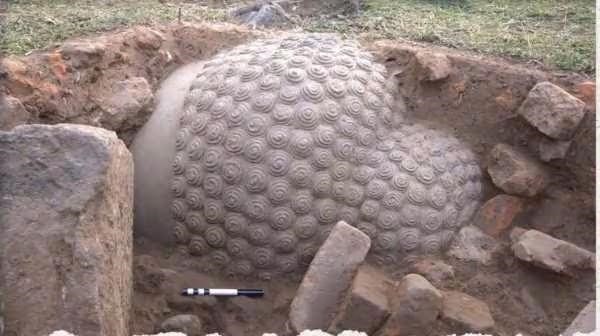ASI Excavations at Ratnagiri Reveal Ancient Buddhist Treasures
Why in the news?
The ASI has resumed excavations at the Ratnagiri Buddhist site in Odisha after 60 years, uncovering relics like a colossal Buddha head and exploring links between Odisha’s Buddhist heritage and Southeast Asian culture.
Excavations at Ratnagiri Uncover Ancient Buddhist Site:
- The Archaeological Survey of India (ASI) has resumed excavations at the Ratnagiri Buddhist complex in Odisha’s Jajpur district after 60 years.
- This site, dated between the 5th and 13th centuries, is part of Odisha’s Diamond Triangle, along with Lalitgiri and Udaygiri.
Significant Discoveries
- Recent excavations unearthed a colossal Buddha head, a massive palm, an ancient wall, and inscribed Buddhist relics, all estimated to date back to the 8th–9th centuries AD.
- The site was previously excavated between 1958 and 1961, revealing a brick stupa, three monastic complexes, and over 100 votive stupas.
- The current excavations aim to uncover hidden structures, study ceramic assemblages, and explore Southeast Asian cultural influences.
Historical and Cultural Importance:
- Odisha’s ties with Southeast Asia are historically significant, with Kalinga’s maritime trade links promoting Buddhism in the region.
- Emperor Ashoka’s Kalinga War (261 BCE) led to his conversion to Buddhism, which he spread across his empire and Southeast Asia.
- Scholars believe Ratnagiri rivaled Nalanda as a Buddhist learning center during its peak (7th–10th centuries).
- The new findings highlight Odisha’s prominence as a Buddhist hub with over 100 ancient sites, shedding light on ancient lifestyles, art, and architecture.
- Excavations are expected to continue for a few more months, offering deeper insights into the site’s historical significance.




